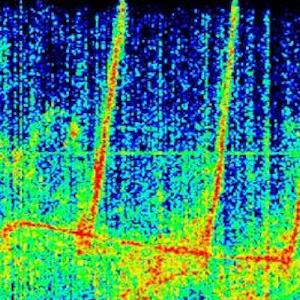This study has been conducted to acquire a macro-understanding of current electronic music generation & consumption across the world. The report serves as an indicator for existing markets as well as the potential in new regions for artists and professionals in the field of electronic music. The study is based on three sources of information - One, based on approximately 600 short interviews of electronic music professionals and generators, based in all the continents. Two, numeric information based on the activity of promoters and consumers of electronic music on Twitter. Three, average data figures released by soundcloud, i-tunes, bandcamp & beatport as of 2016. The report does not include data (or the effect) of piracy or pirated media. The demographical and economic survey of pirated music is often incorrect and biased which creates a false effect.

Key Features.
1. High Consumption
Germany, United States, Canada, England and Holland are regions where the traffic and mass of electronic music generation is highest in the world. France and the francophone music networks span various parts of the world from India to Africa to Canada to China and mainland Europe. Japan, Switzerland, Italy and Scandinavian countries are also big consumers yet less on generators of electronic music. Brazil has emerged on this part of the map in the last ten years as massive audiences flock to electronic music festivals. From these nations, the consumption, institutional presence, marketing, changing preferences and generation of electronic music adds up-to 70% of the world's output. A staggering share. The existing industry and consumption figures include festivals, conferences, support groups, labels and artists of massive variety and contrasting popularity. Highest sale of digital media is also a key feature within these nations. Excepting China, which has a massive media and business structure within it's own borders for Chinese speaking people only. Digital content such as videos, promos, interviews, etc account for 75% of the world's share. These regions are indeed vital to the life and culture of electronic music. Be it popularized trends or independent institutions of electronic music these nations have clearly forged an industry of epic proportions over and around electronic music. The markets within these regions appears to be saturated, compared to the rise in 2006-2012 : yet these nations are abound with innovation and breakthrough electronic music often spurred by niche and emerging technology.
2. Emerging Regions
China, Mexico, Australia, Spain, Argentina, Russia, India, South Africa, Israel and various emerging nations in south america and east Asia contribute little in terms of global numbers, yet they contain a large untapped market and youth audience. These regions are witness to higher numbers of artists, producers and DJs who have embraced electronic music as their sound and weapon. A clear surge is now visible in the number of music festivals, digital consumption rates, start-up business models and professionals entering the business. As a comparative, in India since 2009, the number of youtube and soundcloud users has grown 1700%. The principle reason for this is dispensing large areas with internet connections and mobile-phone technology. Circa 2007, there were 6 to 7 'known' youth music festivals in India which now stands at just over 60. Fact of significance, that the Chinese music industry is a humungous one, yet it remains mostly internalized. China would tie down any major european festival in terms of staggering audiences or the booking of top international artists. Mexico is currently deemed as the 'hot-bed' of progressive breakthrough electronic music culture as well as witness to highly bourgeois beach festivals. Argentina is the favorite destination and 'grab' of many big-format festivals and cartels of DJs based in Europe and the U.S. Unconnected due to distance and languages barriers, nations like New Zealand, Vietnam, Israel, Turkey, Australia, Malaysia and Russia are also witness to rise in number of localized idols, generators, promoters and fans. Though many professionals within these regions do point out the pressure and protocol of corporate sponsored entertainment to be a major hindrance to local talent and enterprise to take fruit. The case with Spain is mirrored with a quantic rise in branded EDM festivals on one hand, and on the other hand a clear dispersion of tiny start-up ventures, technology based events and local talent. The eastern european set of nations too present new vistas for artists and promoters of electronic music culture, yet remain mostly unconnected to people in Asia, West Europe & North America. Poland , Romania and Hungary contain very niche electronic music juntas, clubs, festivals, yet mostly obscure compared to the larger volumes emitting from the west. Chile, Columbia, UAE and Pakistan are now emerging to find a spot on this massive map and emerging global sound. Very little intra-contact or institutional support exists between these emerging countries as of now. Hence the the growth remains mostly inward and depending heavily on internal paradigms and resources. The artists and professionals in these nations could harness and exploit much more if borders are open to new ideas, languages, artists exchange, collaboration and communication. The youth population of these regions accounts for 68% of the world. Approximately 40 different languages. Myriad regional cultural components that shape and give rise to local talent & sound. In these regions, empowering local talent is vital, in order to sustain and build a significant industry. As the internet grows at a quantic rate to reach out to 1 billion new people (2012-2016), these nations and the artists within emerge as strong contenders to the future of electronic music. A staggering figure and latent oppurtunity in response to the existing dominance of the high consumption regions. These regions are poised at, as 'nueva buena vistas'.
3. Open to Speculation
These regions include parts of Africa, the vast isolated span of the Pacific islands or even certain regions of the world which have been effected by war, political calamities or seen as differences of proximity, language and culture. Difficult to imagine the penetration of electronic music in these regions as of now, it remains a wild speculation of sorts. Very little information is available about these regions and very little known about the generators and audience. To view these regions negatively would be an obvious habit, yet to pursue further connections and find a way to encompass these vastly diverse parts of the world would benefit many people including those who remain unconnected and unheard of.
The Map
The representation of electronic music generation has been quantified into a per person format, regardless of a region or a nation. The density / volume is reflective of consumption and generation of electronic music as numeric definition. It is not a cultural or social representation of electronic music culture.
Map created by matrixworld.
https://www.mapsmarker.com/
Document available in Spanish, Chinese & Japanese. DOWNLOAD

Key Features.
1. High Consumption
Germany, United States, Canada, England and Holland are regions where the traffic and mass of electronic music generation is highest in the world. France and the francophone music networks span various parts of the world from India to Africa to Canada to China and mainland Europe. Japan, Switzerland, Italy and Scandinavian countries are also big consumers yet less on generators of electronic music. Brazil has emerged on this part of the map in the last ten years as massive audiences flock to electronic music festivals. From these nations, the consumption, institutional presence, marketing, changing preferences and generation of electronic music adds up-to 70% of the world's output. A staggering share. The existing industry and consumption figures include festivals, conferences, support groups, labels and artists of massive variety and contrasting popularity. Highest sale of digital media is also a key feature within these nations. Excepting China, which has a massive media and business structure within it's own borders for Chinese speaking people only. Digital content such as videos, promos, interviews, etc account for 75% of the world's share. These regions are indeed vital to the life and culture of electronic music. Be it popularized trends or independent institutions of electronic music these nations have clearly forged an industry of epic proportions over and around electronic music. The markets within these regions appears to be saturated, compared to the rise in 2006-2012 : yet these nations are abound with innovation and breakthrough electronic music often spurred by niche and emerging technology.
2. Emerging Regions
China, Mexico, Australia, Spain, Argentina, Russia, India, South Africa, Israel and various emerging nations in south america and east Asia contribute little in terms of global numbers, yet they contain a large untapped market and youth audience. These regions are witness to higher numbers of artists, producers and DJs who have embraced electronic music as their sound and weapon. A clear surge is now visible in the number of music festivals, digital consumption rates, start-up business models and professionals entering the business. As a comparative, in India since 2009, the number of youtube and soundcloud users has grown 1700%. The principle reason for this is dispensing large areas with internet connections and mobile-phone technology. Circa 2007, there were 6 to 7 'known' youth music festivals in India which now stands at just over 60. Fact of significance, that the Chinese music industry is a humungous one, yet it remains mostly internalized. China would tie down any major european festival in terms of staggering audiences or the booking of top international artists. Mexico is currently deemed as the 'hot-bed' of progressive breakthrough electronic music culture as well as witness to highly bourgeois beach festivals. Argentina is the favorite destination and 'grab' of many big-format festivals and cartels of DJs based in Europe and the U.S. Unconnected due to distance and languages barriers, nations like New Zealand, Vietnam, Israel, Turkey, Australia, Malaysia and Russia are also witness to rise in number of localized idols, generators, promoters and fans. Though many professionals within these regions do point out the pressure and protocol of corporate sponsored entertainment to be a major hindrance to local talent and enterprise to take fruit. The case with Spain is mirrored with a quantic rise in branded EDM festivals on one hand, and on the other hand a clear dispersion of tiny start-up ventures, technology based events and local talent. The eastern european set of nations too present new vistas for artists and promoters of electronic music culture, yet remain mostly unconnected to people in Asia, West Europe & North America. Poland , Romania and Hungary contain very niche electronic music juntas, clubs, festivals, yet mostly obscure compared to the larger volumes emitting from the west. Chile, Columbia, UAE and Pakistan are now emerging to find a spot on this massive map and emerging global sound. Very little intra-contact or institutional support exists between these emerging countries as of now. Hence the the growth remains mostly inward and depending heavily on internal paradigms and resources. The artists and professionals in these nations could harness and exploit much more if borders are open to new ideas, languages, artists exchange, collaboration and communication. The youth population of these regions accounts for 68% of the world. Approximately 40 different languages. Myriad regional cultural components that shape and give rise to local talent & sound. In these regions, empowering local talent is vital, in order to sustain and build a significant industry. As the internet grows at a quantic rate to reach out to 1 billion new people (2012-2016), these nations and the artists within emerge as strong contenders to the future of electronic music. A staggering figure and latent oppurtunity in response to the existing dominance of the high consumption regions. These regions are poised at, as 'nueva buena vistas'.
3. Open to Speculation
These regions include parts of Africa, the vast isolated span of the Pacific islands or even certain regions of the world which have been effected by war, political calamities or seen as differences of proximity, language and culture. Difficult to imagine the penetration of electronic music in these regions as of now, it remains a wild speculation of sorts. Very little information is available about these regions and very little known about the generators and audience. To view these regions negatively would be an obvious habit, yet to pursue further connections and find a way to encompass these vastly diverse parts of the world would benefit many people including those who remain unconnected and unheard of.
The Map
The representation of electronic music generation has been quantified into a per person format, regardless of a region or a nation. The density / volume is reflective of consumption and generation of electronic music as numeric definition. It is not a cultural or social representation of electronic music culture.
Map created by matrixworld.
https://www.mapsmarker.com/
Document available in Spanish, Chinese & Japanese. DOWNLOAD



























0 -